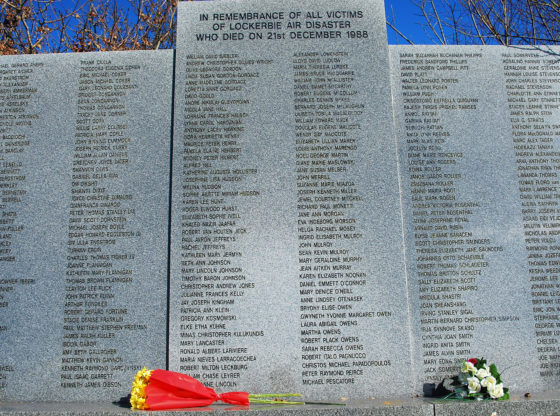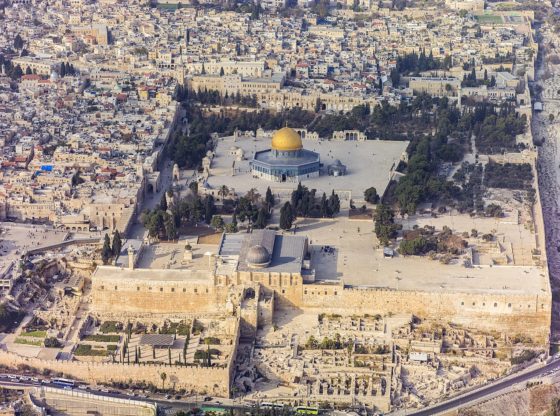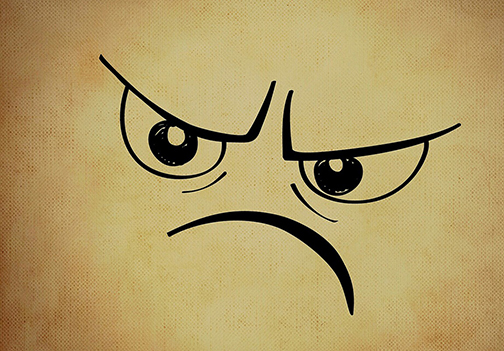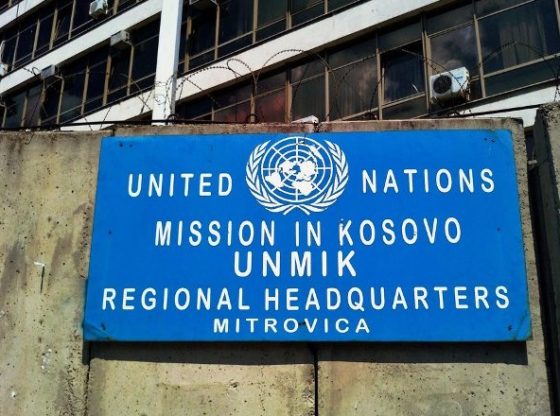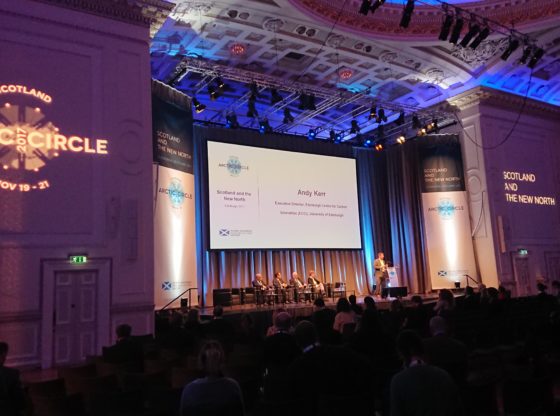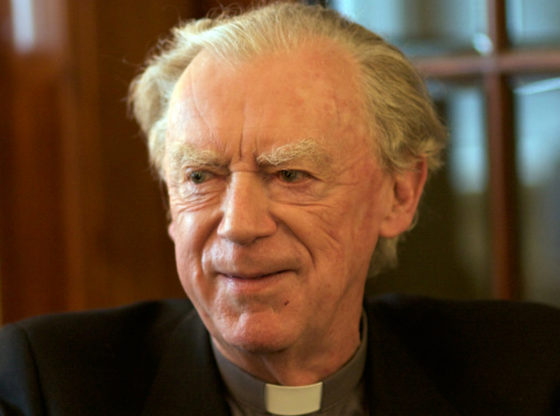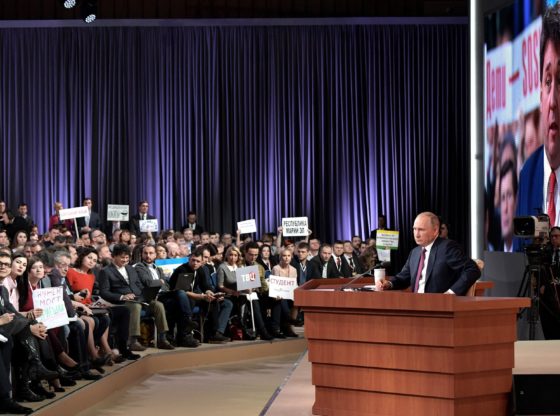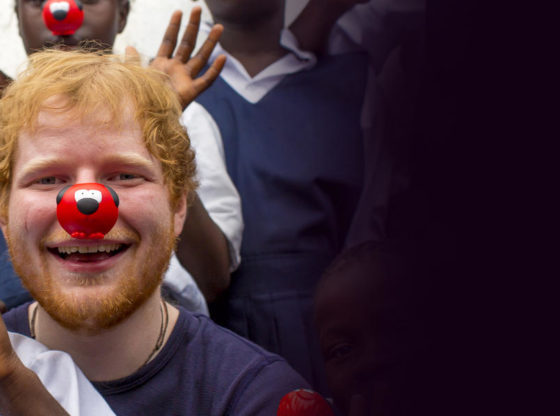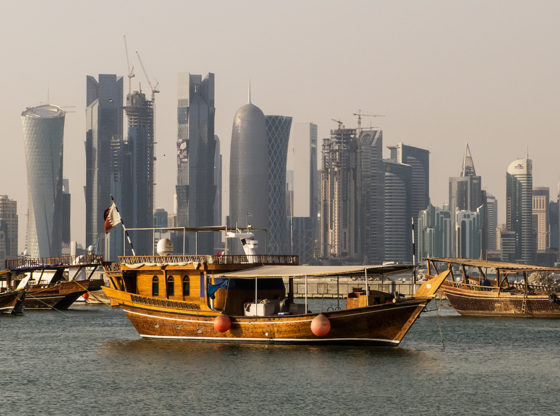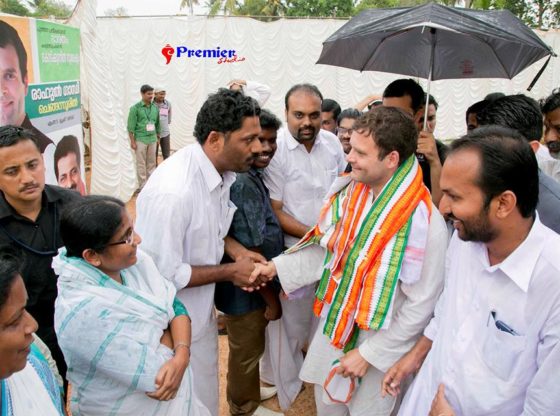“Indigenous people are on the frontline of climate change. We are the first to adapt or we are the first to die.”
Nowhere on earth is the impact of climate change felt more acutely than in the Arctic. Spanning the north of the globe, from Alaska to Greenland and from Siberia to Norway, the Arctic region is one of the most ecologically intact and uniquely adapted areas of our planet, with exceptionally high marine biodiversity and iconic species. The polar region drives and regulates critical earth system functions, including global climate, ocean, and atmospheric circulation. Yet it is among the most vulnerable to the effects of climate change. Communities and wildlife in the Arctic face warming seas, melting ice, and more extreme weather events which threaten their very survival.
As the Arctic’s nearest neighbour, Scotland has a responsibility to listen to the first-hand experiences of people who live there, and to take action. First Minister Nicola Sturgeon has talked often of the ‘moral imperative’ to act on climate change - she did so again in her address to the Arctic Circle Forum in Edinburgh last November. A new Climate Change Bill in 2018 is the perfect opportunity for Scotland to commit to playing its full part in the fight for our future.
Last month, WWF Scotland welcomed three inspiring leaders from communities across the Arctic to address an audience in Edinburgh, and to meet with the Cabinet Secretary for Climate Change, Roseanna Cunningham. Sarah James, an Elder of the Gwich’in Nation in Alaska and Northwestern Canada, Okalik Eegeesiak, Chair of the Inuit Circumpolar Council, and Jannie Staffansson from the Saami Council shared their compelling tales with politicians and decision makers in Scotland.
As part of this visit, Frances Rayner from WWF Scotland interviewed Jannie Staffansson from the Saami Council about the increasing pressures placed on Arctic communities, the resilience of those communities, and what Scotland can do to help.
Born into a reindeer-herding family in Sweden, Jannie has become a powerful voice for the rights of indigenous peoples in the Arctic, and the challenges they face in a changing climate. She trained as an environmental chemist and now works on environmental issues for the Saami Council, the umbrella organisation for Saami organisations in Norway, Sweden, Finland, and Russia, and within the Arctic Council working group Arctic Monitoring and Assessment Program. In 2015, Jannie was elected to be the Arctic Focal Point within the International Indigenous Peoples Forum on Climate Change. She played an important role in the group’s participation at COP21 in Paris.
Q: What brings you to Scotland, Jannie?
I came to Scotland on behalf of my people, the Saami, to put pressure on the Scottish government to introduce an ambitious Climate Change Act – an Act that the Arctic and Scotland deserve. I hope that by telling my story of how climate change is affecting my community, I will make Scotland’s politicians increase their ambitions on this issue.
Q: Can you tell us a bit about Saami culture?
The Saami are fishers, reindeer herders, and hunters. Although there are not many reindeer herders left today, reindeer are still a central part of our culture; our crafts, language, and tradition all have the reindeer at their heart.
“I hope that by telling my story of how climate change is affecting my community, I will make Scotland’s politicians increase their ambitions on this issue.”
My people live between two cultures and this is a tension for many of us. On the one hand, we are part of the western world with its privileging of development and consumption. At the same time, we subscribe to the Saami philosophy which is about respecting nature and giving back what you borrow from the earth. In Saami culture, the reindeer come first. When the reindeer are happy and safe, the Saami are happy and safe.
In Western culture, you as an individual come first. I do find it sad when I see young people who don’t realise that they are part of the ecosystem. I think that’s why a lot of young people are lost - they’ve lost their connection with nature.
Q: How is the changing climate affecting the Saami?
Climate change is something we’ve been forced to confront every day for almost 30 years now. We have eight beautiful seasons but they are becoming erratic and the plants and animals are stressed. We can see temperature fluctuations of up to 33 degrees within the space of a few days. Being unable to predict the weather makes it harder to stay safe. More and more reindeer and people are falling through the ice as we can no longer tell how thick it is. We also lose a lot of reindeer when extreme weather means we can’t travel to where their food is. Most herders can’t rely on the reindeer for their livelihood anymore.
“We can see temperature fluctuations of up to 33 degrees within the space of a few days. Being unable to predict the weather makes it harder to stay safe.”
A global temperature rise of two degrees would equate to a rise of five degrees in the Arctic. When you have this reality hanging over you, you adapt fast and become resilient. It does affect your mental health though, because you know that everything you love is threatened. Your whole way of life might not survive. Our culture is very rich in supporting biodiversity so it would be a huge shame for the world if we lost it.
Q: What other challenges does your community face?
A lot of our communities are fighting big corporations who are developing hydro-power and wind farms on land that is vital for the reindeer. Dams can also be problematic because artificial rivers are more difficult to read, and therefore navigate safely. People don’t realise that you can implement climate change mitigation in a way that actually harms biodiversity and the rights of indigenous communities. There isn’t enough regulation to prevent this.
“We are being doubly punished: firstly by climate change itself; secondly, by mitigation projects that don’t respect the very communities who live in a way that is beneficial to the ecosystem.”
We need the best available knowledge to solve our problems – whether this is from Western science or indigenous knowledge. The best solution is to give us a seat at the table. It’s a similar story for women: when we are given an equal footing, everyone benefits from the broader knowledge base.
We are being doubly punished: firstly by climate change itself; secondly, by mitigation projects that don’t respect the very communities who live in a way that is beneficial to the ecosystem. It is a similar story in Africa and Asia; indigenous communities are paying the price for other people’s consumption and waste. It would be a shame if my culture did not survive, but I have hope because I have faith in my people. I think the Saami will always be fighting and that’s the only thing you can do as a human being.
Q: How do you see the future of the Arctic?
We know that even if we reduce our emissions, the changes that are happening in the Arctic are likely to continue for some time to come. We’re prepared for this. It will be very tough but I know that we are very resilient. We are not vulnerable, because that implies that we are not active, or that we’re not finding new ways of coping, using our traditional knowledge and new science.
We are still here because we are such resilient people. In some ways, we’ll be able to cope with climate change better than some of our industrialised neighbours. If I lose my home, I know how to make another from what I can find in nature. This isn’t true of many communities.
In many of the industrialised countries, people just don’t feel climate change like we do. It can be difficult for you to relate to the problem and understand its consequences if you don’t have much access to trees, to nature, and to animals. If you live in a world of metal and asphalt. We are in nature and communicating with it every day. If you don’t have this experience, how would you understand it? In places like Edinburgh and in Stockholm, people are living through climate change but they just don’t see it.
Even though I don’t think we have the political will we need yet to fully tackle climate change, I have faith in people. While I don’t have the same faith in politicians, I know they will respond to the requests of their people. The people have that responsibility.
Q: What can we in Scotland do?
Scotland has a lot of historic climate debt and you need to clean up for that. Indigenous communities remember that - I think Scotland and the UK remember it too. The upcoming Climate Change Act in Scotland should be use to set a target for cutting your emissions by one hundred percent by 2050. The technology is there; it’s just a question of being willing to invest in the future.
“The upcoming Climate Change Act in Scotland should be use to set a target for cutting your emissions by one hundred percent by 2050. The technology is there; it’s just a question of being willing to invest in the future.”
I have faith in Scotland and its people to do what’s right. Push your politicians and if they’re not good enough, become the politicians. Push your companies too. Take responsibility and find out what they’re up to.
Q: What have been the highlights of your time in Scotland?
I enjoyed looking out the window on the train from London to Edinburgh. I’d heard about sheep-dogs and I imagined how the landscape would be favourable to them. Scotland is a beautiful country. The people are friendly and your cities are cosy. I enjoyed seeing people wear their family tartan at a ceilidh in Edinburgh. I also love that you celebrate your language and was encouraged to read Gaelic on your road signs. So much knowledge is nested in our languages.
Jannie Staffansson has added her voice to the Stop Climate Chaos Scotland campaign #OorFuture which calls for the upcoming Scottish Climate Change Act to commit to a target of net zero greenhouse gas emissions by 2050.
CABLE would like to thank WWF Scotland for arranging and conducting this interview, and for letting us publish it.
Feature image: Jannie Staffansson. Born into a reindeer-herding family, Jannie has become a powerful voice for indigenous Arctic communities. Image: Maverick / WWF.

